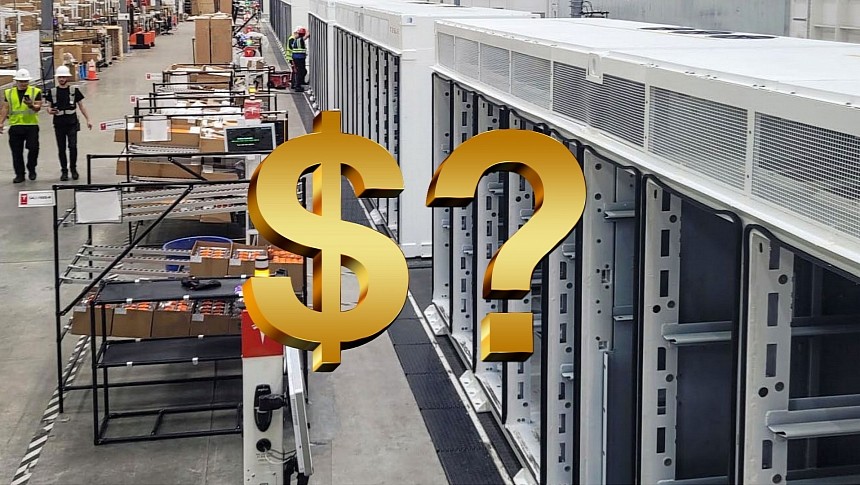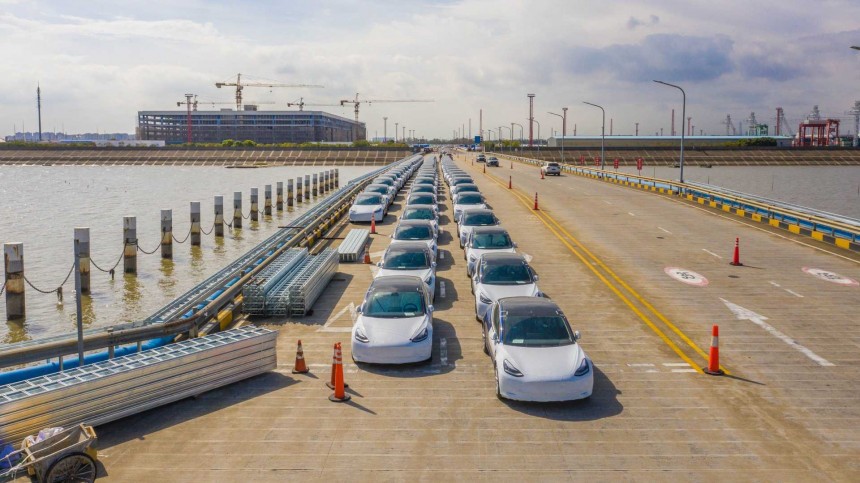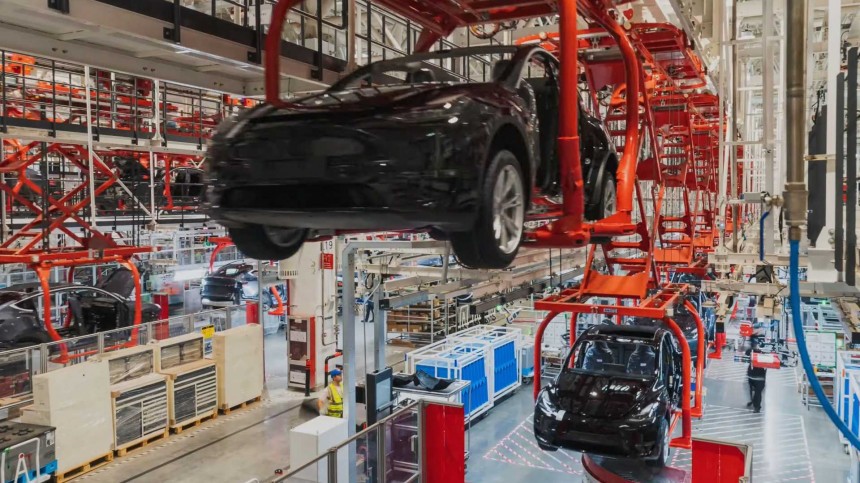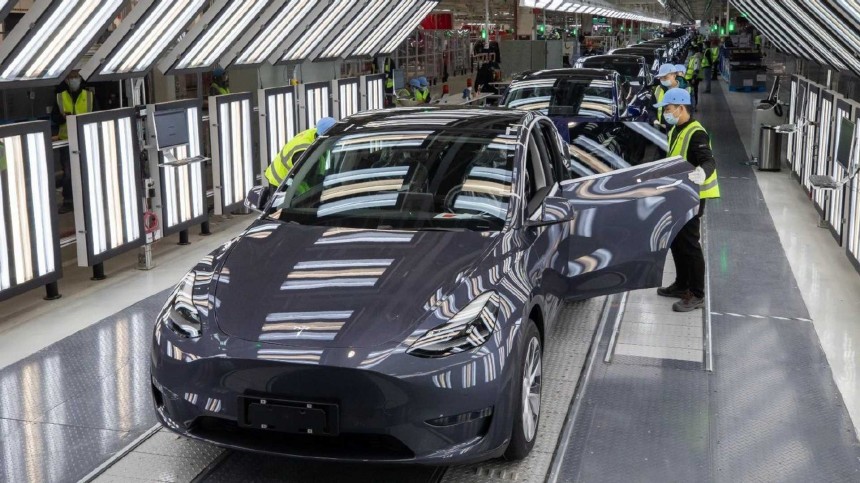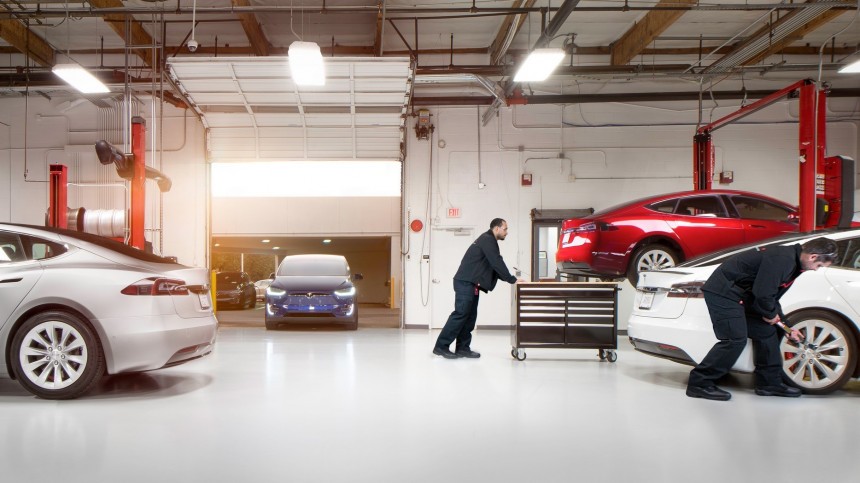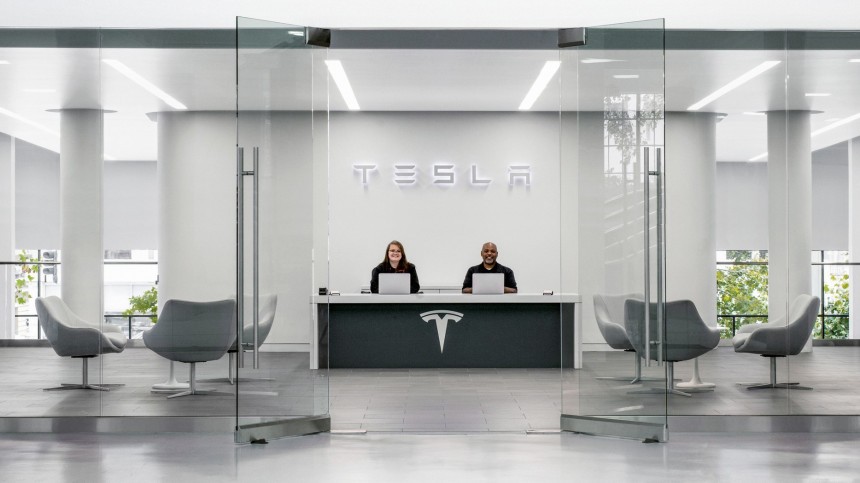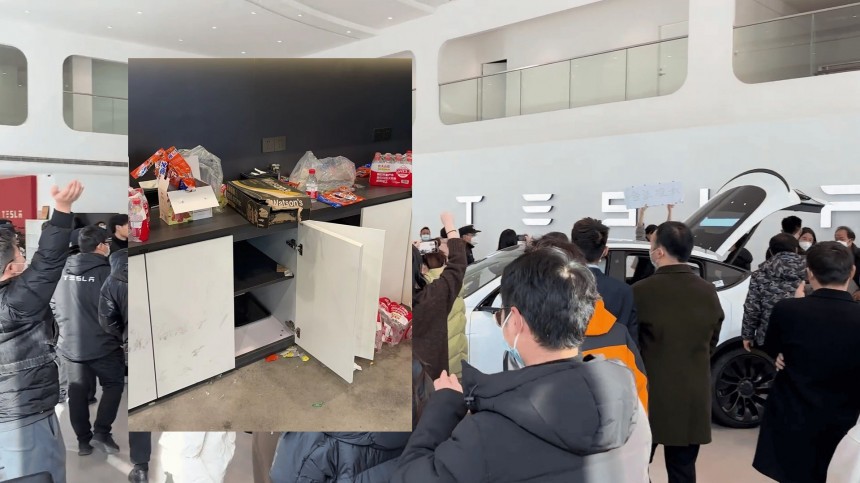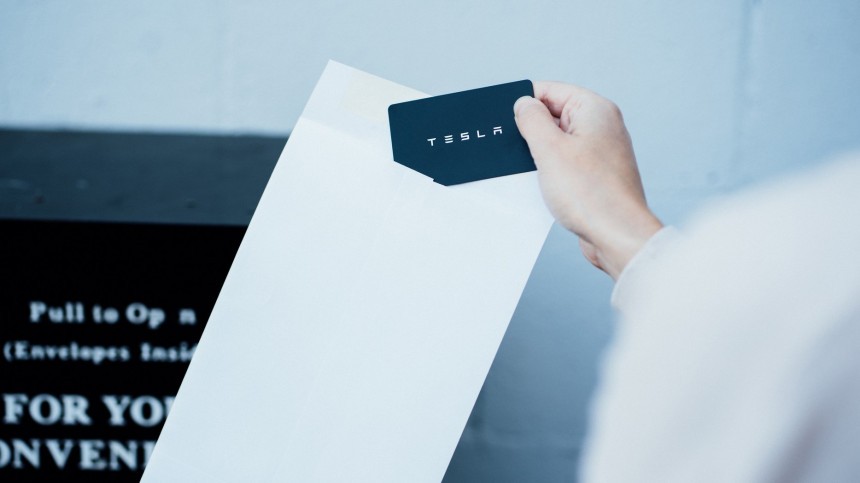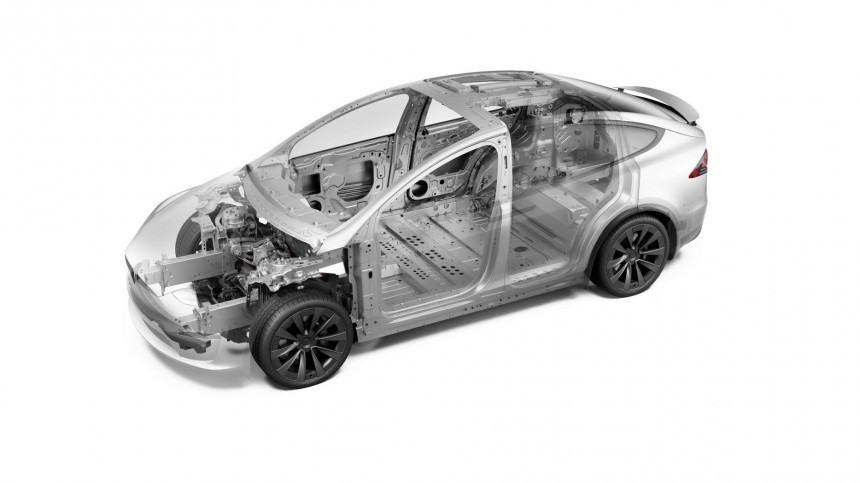Tesla's discounts have been bugging me since they started. I love the idea of having cheaper cars, but I can only respect things that make sense. The battery electric vehicle (BEV) maker's strategy doesn't. When the Q3 2023 numbers got out, I made another effort to show that in a series of stories that prove Tesla lost a lot of money trying to move metal. No attempt to defend that it could do that without harming its stakeholders has stood up. The series' conclusion demands examining that as much as the numbers.
A good start is laying down several apparently random facts that can actually shed some light on this. If you follow the news, you are certainly familiar with most of them. It is just a matter of connecting the dots.
Tesla started offering discounts in January. Despite them, it kept on reporting profits that just did not add up, as the third part of this series made evident. On August 7, Zach Kirkhorn wrote on LinkedIn that Tesla had announced he was stepping down from his role of Chief Financial Officer (CFO) after four years and six months. That is a pretty peculiar way to say you asked to leave, isn't it? He joined the company in March 2010 as a senior analyst. The Q3 2023 earnings report was the first one signed by his successor, Vaibhav Taneja, who was the Chief Accounting Officer (CAO) before that.
This report was also the first one to expose Tesla's discount strategy had failed. The last time I checked – in April – the BEV maker had an inventory of 84,583 – counting all unsold units since 2018. On average, the company made 20,000 cars more than it delivered per quarter from Q3 2022 until Q1 2023. In Q2 2023, the excess was "only" 13,560, which made the number of cars yet to hand to customers jump to 98,143 units.
Although Tesla managed to sell more BEVs than it made in Q3 2023, the difference was only 4,571 BEVs. That means the company still has 93,572 vehicles waiting for a buyer. With a current average price of $61,590 for Tesla's lineup, they represent $5,763,099,480 sitting somewhere, just waiting to turn into money. Even if you considered that the inventories had 93,572 Model 3 RWD – the cheapest Tesla for sale today, at $38,990 a pop – that would still be $3,648,372,280. Any company would love to have $3.65 billion more to spend.
Unlike what Tesla and its investors state about production stops, the reason for the discounts is obviously low demand. The Model Y became the best-selling car in several places because it artificially turned into a bargain. So did the Model 3, but its sales were so low that discounts were not enough: Tesla had to refresh it. That did not work with the Model S and Model X, as steep as the price cuts were.
The truth is that they did not create demand: they only pushed those who already considered buying a Tesla to make the move – or the "Tesla stretch," as some customers frame the financial effort to pay for these cars. Even so, the BEV maker was still talking about new factories and higher production targets. These plans have been halted, probably not for the reasons Musk and his executives mentioned. We'll get back to this in a bit.
Another news that is relevant to this story but may seem unrelated is that the BEV maker has been trying to stop unionizing efforts in all its factories. In Germany, it said it wanted to enlighten workers about the disadvantages of joining a union. IG Metall saw that as a menace.
When Elon Musk discussed unions in the past, he asked his employees in a tweet: "But why pay union dues & give up stock options for nothing?" That also sounded threatening. The UAW filed an unfair-labor-practice charge based on the tweet, alleging that it was "a threat to rescind stock options if employees unionized." The Tesla CEO blamed the union for not having "individual stock ownership as part of the compensation at any other company," which would be the reason for it to eventually end with unionization. As you can see, Musk and the union deal with these stock options as if they were gold.
Tesla employees in Germany told Stern that the BEV maker's pressure for high production volumes creates the unsafe conditions they face at Giga Grünheide. They have reported several such risks: aluminum powder, lack of personal protective equipment (PPE), and performing tasks they shouldn't, among others. That is probably why 1,000 of them are now trying to unionize the plant.
Two journalists from the German magazine managed to work for Tesla at Giga Grünheide and confirmed some of these situations, including metal pieces falling from the factory roof. The workers Stern talked to said that Tesla pursues high production numbers in an effort to drive share prices up, the same assets Musk and unions believe to be as good as money. Let's work with the possibility that these workers are right.
If that were the case, that would explain why one of the worst offenses in the Tesla world is "short seller" – someone who bets that the stock price will drop to pocket profits when it happens. If the shares appreciate, they lose cash. Some people see short selling as an evil practice of wishing for a business to fail. I have to say that this was also my impression when I wrote a text about that years ago. After watching "The Big Short" and covering Hindenburg Research's public investigations, I had to agree that there's more to it. Some investors use short selling to warn others and the market about wrong business practices. In the movie, the moral dilemma that the characters face by making money with the financial failure they anticipated is palpable. Was it just fiction? I would like to believe that this is not the case.
Tesla advocates have also accused me of being a short seller – some probably still do. Keith Leech turned into one to force Tesla to sue him. That would be a way for him to prove these BEVs have a whompy wheels problem, but Tesla never took the bait. In my case, I have no intention to buy Tesla shares or to bet against them.
Anyway, I initially thought those detractors were mad at me because they thought I wanted the company to fail. I even wrote a text trying to explain my goal was to help customers affected by the multiple defects and failures I was covering. Doing so was – and still is – a way to push companies to offer better products or services; Tesla is no exception. Everything that has happened in 2023 makes me think about how naive I may have been…
It took me years to realize that most of these folks do not seem to be worried about the vehicles or the company; they appear to be concerned solely with their shares from the BEV maker. Early investors got rich when their prices went up. Those who have not pocketed that money by selling the stock seem to fight anything that threatens its value, even if it is a legitimate concern. Some even urge others to buy the dip when prices drop – which is a way for them to go up again, regardless of the fundamentals.
That would explain why these guys follow Tesla's recommendations to vote against proposals that would improve the company. If several of these proposed measures against racism and sexual harassment had been approved – or even a few – the BEV maker would probably have fewer lawsuits due to these issues nowadays. At the very least, it would have proven it wanted to do something to change that scenario.
When Tesla's biggest supporters keep track of how many vehicles it will produce and deliver in each quarter, that makes you suspect they are more worried about the stock market than about the company's true health. Or are they okay with the old lineup of only four vehicles? Or with the recurrent defects, the lousy build quality, the battery packs that cost $20,000 to replace, or the Tesla Service Centers that have long waiting lines? The deal is that the BEV maker's management seems to be on the same beat.
Financial analysts always estimate sales and earnings. Tesla's discounts were the easy way to deliver the former, even if that penalized the latter. In Q3 2023, both got hurt. For many companies, that does not matter if the fundamentals are in good shape. In other words, if they can sell more products than they can manufacture, if these carmakers are spending less in production than they charge customers (to have profits), if they have new models in the pipeline, if customers are satisfied with the brands… things like that. Share prices will move up when everything that is in the plans starts to bear fruit.
The sane way to drive up demand is to offer better products that look like a bargain from the get-go in relevant market segments. That's something you just can't do with four models. If you want to sell a cheaper car, you develop one. Reducing the prices of a vehicle that is already for sale will hurt depreciation and will make those who paid the higher fees mad. We have even seen protests in China against that.
Tesla's (and Musk's) strategy is to announce new products that will allegedly revolutionize the market, such as the Cybertruck, the Roadster, the dancing robot, 4680 cells, and the Dojo supercomputer. Most companies only do that when these products are fully developed and ready to hit the market. That prevents the competitors from being prepared to deal with them or even to undercut their plans. The Cybertruck is the perfect example.
First presented in November 2019, it should have arrived in 2021, starting at $39,900. Almost four years later, Tesla is calling the people who reserved it to say that the tri-motor Plaid version – which was slated to cost $69,990– will now demand $98,990. Ford, GM, and Rivian delivered electric pickup trucks earlier, most of them at lower prices.
That shows most Tesla products begin as mere bold promises, not something customers will be able to buy in a little while. They will start at unreal prices – remember the Model 3? They will deliver ranges or performance numbers that either are never met or only occur under extraordinary circumstances. That is often accused of stock pumping. The dump component that would turn it into a classic fraud case is something Elon Musk refused several times: he repeats that his money will be the last to leave the company.
Ironically, he sold the equivalent of $39 billion in shares from November 2021 until December 2022, which is certainly way more than he ever invested in the BEV maker. That is a reminder that Tesla turned Musk into the world's richest man, not the other way around. The CEO is currently under investigation by the Department of Justice (DoJ) and the Securities and Exchange Commission (SEC) for possibly using the company's funds on personal projects: a glass house in Austin known as Project 42. Tesla is also paying around $20,000 a year to be on Musk's social media, which is hard to justify as a sensible or coherent business decision. The CEO often bragged about not needing to spend on marketing.
Considering how the BEV maker and Musk use Tesla's shares almost as money (collateral in social media purchases, benefits for workers, compensation for executives, etc.), you can't blame the people who say Tesla's stock is its main product: the pieces fit the puzzle neatly.
Just think about it: why would you promise products that will prove so hard to develop or manufacture that they will have "dug our own grave" in the end? These are Musk's words, not mine. To make matters worse, the Cybertruck is an engineering embarrassment: it was announced as a stressed-skin vehicle, and it turned out to be an ordinary – and expensive – unibody truck. What is the gain in speeding things up with such reputation risks?
Why would any automaker rush to deliver vehicles that may present serious issues in the future if not to present higher sales numbers? Tesla gave birth to the motto "deliver now, fix later" by avoiding tests that could anticipate preventable repair costs. Why would you knowingly use "scrap parts" in new cars just to ship them to customers, as the Stern story revealed? If that's the drive you should follow, it also explains the poor quality control: a careful one could slow down deliveries.
All these situations will make these brand-new cars come back soon to Tesla Service Centers, which are already crowded. That's a double problem for the BEV maker. First, because all Tesla Service Centers belong to the company. Second, because these are warranty repairs – at least when the customers do not refuse to take delivery of the vehicles. Voluntarily accepting this additional expense, which will increase the cost of goods sold (COGS), only makes sense if what you truly need is higher delivery numbers. Tesla has a record of classifying warranty repairs as goodwill, which financial statements do not have to include.
Tesla may have other reasons for the discounts, but the idea that it is trying to move metal at all costs to increase stock prices is the one that better explains them. Everything points in that direction, and Tesla keeps presenting more and more elements that confirm that. I swear I tried to think of another one, but I am still struggling to understand how a company with a four-car lineup, one truck, some battery packs, and solar panels can be the world's most valuable car company in market cap. Oops…
Tesla started offering discounts in January. Despite them, it kept on reporting profits that just did not add up, as the third part of this series made evident. On August 7, Zach Kirkhorn wrote on LinkedIn that Tesla had announced he was stepping down from his role of Chief Financial Officer (CFO) after four years and six months. That is a pretty peculiar way to say you asked to leave, isn't it? He joined the company in March 2010 as a senior analyst. The Q3 2023 earnings report was the first one signed by his successor, Vaibhav Taneja, who was the Chief Accounting Officer (CAO) before that.
This report was also the first one to expose Tesla's discount strategy had failed. The last time I checked – in April – the BEV maker had an inventory of 84,583 – counting all unsold units since 2018. On average, the company made 20,000 cars more than it delivered per quarter from Q3 2022 until Q1 2023. In Q2 2023, the excess was "only" 13,560, which made the number of cars yet to hand to customers jump to 98,143 units.
Unlike what Tesla and its investors state about production stops, the reason for the discounts is obviously low demand. The Model Y became the best-selling car in several places because it artificially turned into a bargain. So did the Model 3, but its sales were so low that discounts were not enough: Tesla had to refresh it. That did not work with the Model S and Model X, as steep as the price cuts were.
The truth is that they did not create demand: they only pushed those who already considered buying a Tesla to make the move – or the "Tesla stretch," as some customers frame the financial effort to pay for these cars. Even so, the BEV maker was still talking about new factories and higher production targets. These plans have been halted, probably not for the reasons Musk and his executives mentioned. We'll get back to this in a bit.
Another news that is relevant to this story but may seem unrelated is that the BEV maker has been trying to stop unionizing efforts in all its factories. In Germany, it said it wanted to enlighten workers about the disadvantages of joining a union. IG Metall saw that as a menace.
Tesla employees in Germany told Stern that the BEV maker's pressure for high production volumes creates the unsafe conditions they face at Giga Grünheide. They have reported several such risks: aluminum powder, lack of personal protective equipment (PPE), and performing tasks they shouldn't, among others. That is probably why 1,000 of them are now trying to unionize the plant.
Two journalists from the German magazine managed to work for Tesla at Giga Grünheide and confirmed some of these situations, including metal pieces falling from the factory roof. The workers Stern talked to said that Tesla pursues high production numbers in an effort to drive share prices up, the same assets Musk and unions believe to be as good as money. Let's work with the possibility that these workers are right.
Tesla advocates have also accused me of being a short seller – some probably still do. Keith Leech turned into one to force Tesla to sue him. That would be a way for him to prove these BEVs have a whompy wheels problem, but Tesla never took the bait. In my case, I have no intention to buy Tesla shares or to bet against them.
Anyway, I initially thought those detractors were mad at me because they thought I wanted the company to fail. I even wrote a text trying to explain my goal was to help customers affected by the multiple defects and failures I was covering. Doing so was – and still is – a way to push companies to offer better products or services; Tesla is no exception. Everything that has happened in 2023 makes me think about how naive I may have been…
That would explain why these guys follow Tesla's recommendations to vote against proposals that would improve the company. If several of these proposed measures against racism and sexual harassment had been approved – or even a few – the BEV maker would probably have fewer lawsuits due to these issues nowadays. At the very least, it would have proven it wanted to do something to change that scenario.
When Tesla's biggest supporters keep track of how many vehicles it will produce and deliver in each quarter, that makes you suspect they are more worried about the stock market than about the company's true health. Or are they okay with the old lineup of only four vehicles? Or with the recurrent defects, the lousy build quality, the battery packs that cost $20,000 to replace, or the Tesla Service Centers that have long waiting lines? The deal is that the BEV maker's management seems to be on the same beat.
The sane way to drive up demand is to offer better products that look like a bargain from the get-go in relevant market segments. That's something you just can't do with four models. If you want to sell a cheaper car, you develop one. Reducing the prices of a vehicle that is already for sale will hurt depreciation and will make those who paid the higher fees mad. We have even seen protests in China against that.
Tesla's (and Musk's) strategy is to announce new products that will allegedly revolutionize the market, such as the Cybertruck, the Roadster, the dancing robot, 4680 cells, and the Dojo supercomputer. Most companies only do that when these products are fully developed and ready to hit the market. That prevents the competitors from being prepared to deal with them or even to undercut their plans. The Cybertruck is the perfect example.
That shows most Tesla products begin as mere bold promises, not something customers will be able to buy in a little while. They will start at unreal prices – remember the Model 3? They will deliver ranges or performance numbers that either are never met or only occur under extraordinary circumstances. That is often accused of stock pumping. The dump component that would turn it into a classic fraud case is something Elon Musk refused several times: he repeats that his money will be the last to leave the company.
Ironically, he sold the equivalent of $39 billion in shares from November 2021 until December 2022, which is certainly way more than he ever invested in the BEV maker. That is a reminder that Tesla turned Musk into the world's richest man, not the other way around. The CEO is currently under investigation by the Department of Justice (DoJ) and the Securities and Exchange Commission (SEC) for possibly using the company's funds on personal projects: a glass house in Austin known as Project 42. Tesla is also paying around $20,000 a year to be on Musk's social media, which is hard to justify as a sensible or coherent business decision. The CEO often bragged about not needing to spend on marketing.
Just think about it: why would you promise products that will prove so hard to develop or manufacture that they will have "dug our own grave" in the end? These are Musk's words, not mine. To make matters worse, the Cybertruck is an engineering embarrassment: it was announced as a stressed-skin vehicle, and it turned out to be an ordinary – and expensive – unibody truck. What is the gain in speeding things up with such reputation risks?
Why would any automaker rush to deliver vehicles that may present serious issues in the future if not to present higher sales numbers? Tesla gave birth to the motto "deliver now, fix later" by avoiding tests that could anticipate preventable repair costs. Why would you knowingly use "scrap parts" in new cars just to ship them to customers, as the Stern story revealed? If that's the drive you should follow, it also explains the poor quality control: a careful one could slow down deliveries.
Tesla may have other reasons for the discounts, but the idea that it is trying to move metal at all costs to increase stock prices is the one that better explains them. Everything points in that direction, and Tesla keeps presenting more and more elements that confirm that. I swear I tried to think of another one, but I am still struggling to understand how a company with a four-car lineup, one truck, some battery packs, and solar panels can be the world's most valuable car company in market cap. Oops…
